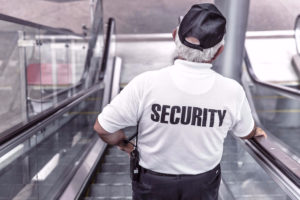 “Dashing through the snow in a one-horse open sleigh…” OH BOY, this is one of my favorite times of the year! Christmas time and the other holidays just make it special for me. The television specials, the music, the foods and treats and the decorations all combine to just give a warm feeling. I even feel like people tend to be friendlier and more helpful to each other. Then there is the shopping to do, going out to window shop or find that perfect gift for someone(s) special in our lives. Living in the South we don’t often get to dash through the snow but when you live up in the northern states you can add the winter frolicking to your holidays. Even if we haven’t experienced it almost all of us have seen pictures or movies with reindeer dashing through the snow pulling Santa’s sleigh. There’s something about it that evokes a bit of childhood magic.
“Dashing through the snow in a one-horse open sleigh…” OH BOY, this is one of my favorite times of the year! Christmas time and the other holidays just make it special for me. The television specials, the music, the foods and treats and the decorations all combine to just give a warm feeling. I even feel like people tend to be friendlier and more helpful to each other. Then there is the shopping to do, going out to window shop or find that perfect gift for someone(s) special in our lives. Living in the South we don’t often get to dash through the snow but when you live up in the northern states you can add the winter frolicking to your holidays. Even if we haven’t experienced it almost all of us have seen pictures or movies with reindeer dashing through the snow pulling Santa’s sleigh. There’s something about it that evokes a bit of childhood magic.
While dashing may be magical and exciting when it comes to playing in a winter wonderland it isn’t good when the dashing involves the pursuit of shoplifters. The holidays may bring out the best in most of us but somehow it brings out other things too, like thieves and criminals. The holidays are a notorious time of the year for the increases in shoplifting. Professional shoplifters often use the crowds in stores to hide their activity. Casual shoplifters or spontaneous shoplifters come in and steal to get a thrill or because they want to impress their friends. It may be greed that drives these people because they want something they can’t afford. Whatever the reasons shoplifters make up for their crime the fact is they are still stealing and it makes no difference if they are professionals or amateurs. It is important for store managers and employees to try to deter the theft before it takes place. The use of retail anti-theft devices like a Checkpoint Security System and promoting excellent customer service are two ways to accomplish this.
When that deterrence fails however the objective becomes one of trying to get a shoplifter to dump the merchandise before they get to an exit door. Loss Prevention professionals have some tricks they may try to employ, pulling out radios, talking about the merchandise that is concealed, making it apparent they are following the person towards the door. The one thing they can’t (or shouldn’t) do is make an accusation they cannot support. It also may depend on the laws of a state about whether concealment alone and walking past cash registers is enough to constitute shoplifting. In any situation, care has to be taken on how much store personnel does to try to get a shoplifter to dump merchandise.
When all of these steps fail and a shoplifter refuses to drop merchandise they have concealed there is a good chance they will dash out the door and run to get away. It is a natural reflex for the store employee to have the urge to chase after the criminal. Having been in this situation more times than I can count as a Loss Prevention Associate and Manager, I know the feeling. It takes restraint and self-control not to follow the perpetrator when they run. Associates must understand that chasing can lead to someone being injured and that can turn into a lawsuit. A dash to catch a shoplifter can take an employee into a dangerous situation where they may end up facing a weapon. A shoplifter who runs has little or no regard for others and may trample someone, push them down or worse, get to their car and run into someone. Some people have gone so far to try to grab a shoplifter from their car and have wound up getting dragged by the vehicle. Believe me when I tell you there is nothing your store sells that is worth anyone getting hurt over.
Be smart and safe this holiday season. Use retail anti-theft devices on the merchandise you sell. Make customer service training a priority as you are training seasonal and even older staff members. Let them know how their service makes a positive impact on sales and prevents theft. Finally, make a point of emphasizing the dangers involved in dashing after a criminal. The only running to be done by employees is the running of cash registers as your cashiers are ringing up holiday sales.
 According to the Small Business Administration (SBA), there are more than 28 million small businesses in the United States and they account for more than 99% of businesses in the country. Small businesses employ close to 57 million people in the United States alone and are a driving force in the progress of the US economy. The good news for an entrepreneur that wants to start a business is that they are not alone, but if you are a small business in the retail industry, the problems you will encounter do not come as paperwork filings or taxes paid. Shoplifting and employee theft are two of the major causes small retail shops face financial distress during their business enterprise. It is an unfortunate problem, but the problem is there and the small business owner has to find solutions to the specific problems in their store.
According to the Small Business Administration (SBA), there are more than 28 million small businesses in the United States and they account for more than 99% of businesses in the country. Small businesses employ close to 57 million people in the United States alone and are a driving force in the progress of the US economy. The good news for an entrepreneur that wants to start a business is that they are not alone, but if you are a small business in the retail industry, the problems you will encounter do not come as paperwork filings or taxes paid. Shoplifting and employee theft are two of the major causes small retail shops face financial distress during their business enterprise. It is an unfortunate problem, but the problem is there and the small business owner has to find solutions to the specific problems in their store. It might be too early for retailers to prepare for the holiday season, but it is never too early to implement security measures to prevent shoplifting in their stores. The holiday season attracts more customers than at any other time of the year, therefore shoplifting incidents increase with the increase of customers as well.
It might be too early for retailers to prepare for the holiday season, but it is never too early to implement security measures to prevent shoplifting in their stores. The holiday season attracts more customers than at any other time of the year, therefore shoplifting incidents increase with the increase of customers as well. Are you hiring someone who has the tendency to steal from their employer?
Are you hiring someone who has the tendency to steal from their employer? I remember it like it was yesterday. It was a Black Friday morning and we had lines of customers jockeying for position at 16 front end cash registers, two pharmacy registers, a jewelry counter register and 2 registers at our electronics counter. Sure, there were a lot of people, hundreds if not a thousand at one time but we were handling it. I had our Loss Prevention team monitoring cameras, checking receipts at the front doors and walking the floor with “Security” jackets on to deter theft and prevent fights. The store management team had good plans in place for replenishing freight on the floor and giving employees breaks. I had worked with the Store Manager to control the flow of customers into our building and all had gone off without a hitch, no pushing, shoving or fights. I even had a number of police officers at our front doors aiding us with crowd control. We had really planned for every contingency, or so we thought. The one thing that we had not planned for happened and it was a major problem, our register system went down! The audible sighs, snide remarks, and expressions of anger and frustration were heard in one collective voice. All of our managers jumped into action trying to reboot registers and get systems back online. Ever so slowly we got things moving again but it was a nightmare and it made us realize the scary truth, we had not really prepared for everything as well as we thought we had. A number of shopping carts had been abandoned with Black Friday specials in them and no salesfloor staff available to re-shelve the merchandise.
I remember it like it was yesterday. It was a Black Friday morning and we had lines of customers jockeying for position at 16 front end cash registers, two pharmacy registers, a jewelry counter register and 2 registers at our electronics counter. Sure, there were a lot of people, hundreds if not a thousand at one time but we were handling it. I had our Loss Prevention team monitoring cameras, checking receipts at the front doors and walking the floor with “Security” jackets on to deter theft and prevent fights. The store management team had good plans in place for replenishing freight on the floor and giving employees breaks. I had worked with the Store Manager to control the flow of customers into our building and all had gone off without a hitch, no pushing, shoving or fights. I even had a number of police officers at our front doors aiding us with crowd control. We had really planned for every contingency, or so we thought. The one thing that we had not planned for happened and it was a major problem, our register system went down! The audible sighs, snide remarks, and expressions of anger and frustration were heard in one collective voice. All of our managers jumped into action trying to reboot registers and get systems back online. Ever so slowly we got things moving again but it was a nightmare and it made us realize the scary truth, we had not really prepared for everything as well as we thought we had. A number of shopping carts had been abandoned with Black Friday specials in them and no salesfloor staff available to re-shelve the merchandise. With Thanksgiving right around the corner, I thought it would be an appropriate time for me to ask the employers out there how thankful are you for the staff you have? I don’t mean are you just thankful you have people who work for you in a general sense but how thankful are you for what they bring to the workplace every day? Maybe you have never thought about it like that. I’m certain you are thankful that Bobby showed up on time today or Mary Jane rang up customers without a customer complaint. But have you ever looked at how you express your thanks to your team? Maybe your attitude is that you pay them and that should be enough. Perhaps you give your employees a birthday card when their birthday rolls around each year. But is that really sufficient? Is it fair for your employees to expect more from you in terms of recognition?
With Thanksgiving right around the corner, I thought it would be an appropriate time for me to ask the employers out there how thankful are you for the staff you have? I don’t mean are you just thankful you have people who work for you in a general sense but how thankful are you for what they bring to the workplace every day? Maybe you have never thought about it like that. I’m certain you are thankful that Bobby showed up on time today or Mary Jane rang up customers without a customer complaint. But have you ever looked at how you express your thanks to your team? Maybe your attitude is that you pay them and that should be enough. Perhaps you give your employees a birthday card when their birthday rolls around each year. But is that really sufficient? Is it fair for your employees to expect more from you in terms of recognition? I watched a video shared with me by a former Loss Prevention Manager colleague. The video showed three subjects enter a retail store and all appeared to be wearing masks and at least one looked to be carrying a rifle of some type. There were several employees at the front entrance when the subjects walked in and one of the employees seemed to say something to the one who was carrying what I will refer to as a rifle. The video was not the greatest and the camera is pointing into the store from the exterior door so for the most part, the backs of the perpetrators are seen.
I watched a video shared with me by a former Loss Prevention Manager colleague. The video showed three subjects enter a retail store and all appeared to be wearing masks and at least one looked to be carrying a rifle of some type. There were several employees at the front entrance when the subjects walked in and one of the employees seemed to say something to the one who was carrying what I will refer to as a rifle. The video was not the greatest and the camera is pointing into the store from the exterior door so for the most part, the backs of the perpetrators are seen. Are you a small business owner dealing with the security of your store? Are you tired of not knowing where the losses are coming from? Employee theft and shoplifting are two of the major losses retail stores across the United States face every day. The millions of dollars the retail industry loses every day are due to employee theft and shoplifting, so how do you prepare yourself from employee theft? Employee background checks can be a first step in dealing with employee theft. Paying for background checks for your employees is investing in the future of your store. Training them and going through the hiring process takes time and money. By hiring the right people the first time, you save time and money that can be spent elsewhere.
Are you a small business owner dealing with the security of your store? Are you tired of not knowing where the losses are coming from? Employee theft and shoplifting are two of the major losses retail stores across the United States face every day. The millions of dollars the retail industry loses every day are due to employee theft and shoplifting, so how do you prepare yourself from employee theft? Employee background checks can be a first step in dealing with employee theft. Paying for background checks for your employees is investing in the future of your store. Training them and going through the hiring process takes time and money. By hiring the right people the first time, you save time and money that can be spent elsewhere.